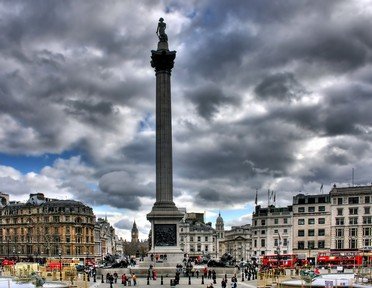Quiz Answer Key and Fun Facts
1. A blue plaque at 15a Grafton Street, Mayfair, marks the home (from 1872 to 1899) of a well-known actor. Famous for his playing of Shakespeare, in 1895 he became the first actor ever to be knighted. What was his name?
2. The block of flats at 91-104 Chelsea Gardens has a blue plaque marking the home of this writer. He is best known for his comic novel "Three Men in a Boat", published in 1889, which he wrote while living here at Flat 104. What is his name?
3. Stand outside 46 Gordon Square, Bloomsbury, and you will see a blue plaque commemorating a famous economist who lived here for 30 years, from 1916 until his death in 1946. He gave his name to a branch of economics that (broadly speaking) advocates stimulating the economy through higher Government spending. Who is he?
4. In 1856, this opera singer, known as "The Swedish Nightingale", moved to London and settled at 189 Old Brompton Road, SW7. Prior to this, she became famous through her concert tours of America under P. T. Barnum. Who is she?
5. The blue plaque at 5 Bennett Park, Blackheath, SE3, marks the home of an artist whose contribution to British culture is rather unusual. Many people will be familiar with his work, even if they do not know his name. He is the best-known, and most prolific, artist of saucy seaside postcards. What is his name?
6. 180 Ebury Street, Belgravia, was for a while the London address of a very famous composer, who stayed here with his father while on a European tour. The blue plaque at this address notes that he composed his first symphony here in 1764, at the age of eight. What is his name?
7. Jermyn Street, in SW1 just off Piccadilly, is best known today for its gentlemen's outfitters establishments. But between 1687 and 1697, number 87 was the residence of a famous physicist, whose theory of universal gravitation made him famous. The blue plaque at this address actually describes him as a "natural philosopher". Who is he?
8. Out in the Western suburbs of London, 309 Upper Richmond Road, Putney, SW15, was the home of this soldier, who in 1910 travelled with Captain Robert Scott on his expedition to the South Pole. He, along with the rest of the party, perished during the return from the Pole. Who was he?
9. 5, York Gate, Regent's Park, has a blue plaque marking the residence here (from 1862 to 1875) of a civil servant who was Gladstone's Assistant Private Secretary and worked in the Department of Education. He is not remembered for these worthy posts, however, but rather for his editing of "The Golden Treasury", an anthology of poetry first published in 1861 and still in print today.
10. 12 Buckingham Street, Strand, WC2, was the home of a certain Secretary to the Admiralty between 1679 and 1688. The blue plaque at this address notes also that he was a diarist, and it is for his diaries, covering the years 1659-1669, that he is famous today. Who is he?
Source: Author
stedman
This quiz was reviewed by FunTrivia editor
DakotaNorth before going online.
Any errors found in FunTrivia content are routinely corrected through our feedback system.

